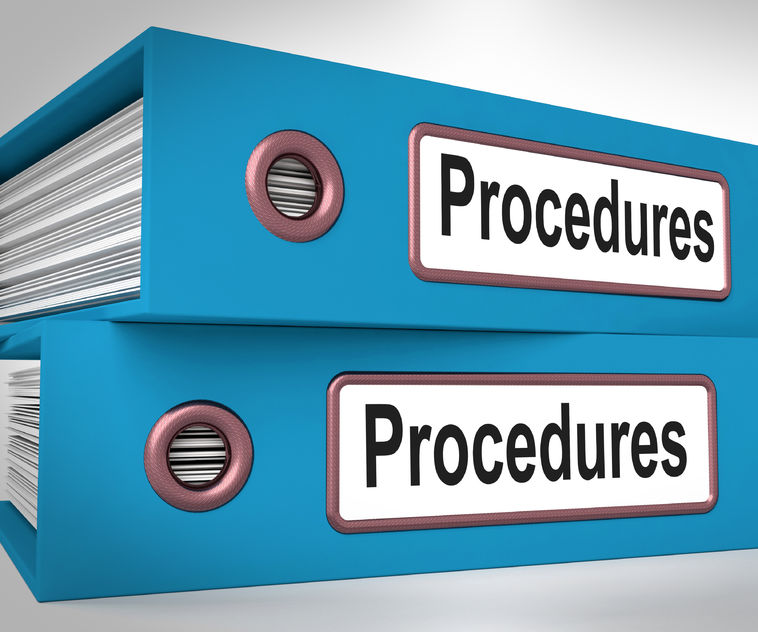
Copyright: stuartphoto / 123RF Stock Photo
Nephrology fellows have seen a decline in the number of procedures performed over the last several years. In fact, some have questioned whether or not it is even necessary to continue training nephrologists to perform certain procedures. Most private practice nephrologists do not perform their own kidney biopsies and rarely place dialysis catheters. A recent perspective article in AJKD by Sachdeva et al. reports on a national survey of nephrology fellows about their experiences and attitudes toward procedures in nephrology. They discuss results on typical “nephrology” procedures such as temporary hemodialysis catheter placement and kidney biopsies. They also report results of hands-on experience performing kidney ultrasonography for diagnostic purposes. This is not currently an ACGME fellowship training requirement.
Let’s review the ACGME required procedures in nephrology (pages 17-18):
The minimum number of each “procedure” is not stated, and the ACGME simply requires that fellows be “competent” in each of these procedures. This survey was conducted in May 2014 and solicited through the US nephrology training program directors and coordinators. A total of 200 respondents completed the survey, approximately 21% of the total number of fellows during the 2013-2014 academic year.
What is happening with temporary HD catheter placement?
Prior surveys by Berns & O’Neill (2007) and Holley & Piraino (1992) reported that a vast majority of temporary HD catheters were placed in the femoral over internal jugular vein. In contrast, Sachdeva et al. report that the number of femoral and internal jugular vein catheters were roughly equal. Of concern, they report that 25% of graduating fellows had not placed a temporary internal jugular catheter, and 20% had not placed a temporary femoral catheter. What is not reported is how many graduating fellows placed no catheters. The availability of interventional radiology and nephrology to place tunneled catheters is surely a factor affecting this rate. In many circumstances, it may be better for the patient to have a permanent catheter rather than a temporary one.
How many catheters does a fellow need to perform to become competent? Five? Ten? Twenty? Maybe a minimum number would be helpful. We performed an open poll on the Renal Fellow Network in 2010, in which we asked how many temporary catheters fellows were placing per year. There was huge variability, but most were in the range of 10-100. However, 23% stated they placed less than five per year, and a few super-users (4%) placed more than 200! It continues to be debated whether temporary catheter placement should remain a requirement. I, for one, feel it is an important skill for any nephrologist to learn, and we should continue requiring this skill—a point echoed by the authors of this study.
What about kidney biopsies?
It is not surprising that hardly anyone is doing blind kidney biopsies anymore. Instead, most are relying on direct visualization of the kidney with ultrasound guidance, and a few are even doing CT guided biopsies. Five percent of respondents who identified as graduating fellows reported not performing a single native or transplant kidney biopsy. Again, the ACGME does not set a minimum number of biopsies required, but instead uses the “competency” language again. In this regard, approximately 25% of respondents reported not having a mandatory required number of biopsies to perform. The majority (Table 1) of fellows are performing between five and 20 kidney native and transplant biopsies.
What about kidney ultrasound, and ultrasound of the lungs for volume overload?
From this survey it is clear that hardly any of the fellows are being trained in kidney ultrasonography. In fact, 83% have no formal training at all. This is likely reflective of the fact that it is not mandated by the ACGME. Are we missing an important opportunity to enhance the skill of our future nephrology workforce? Interestingly, 96% of respondents to this survey would have liked formal training in ultrasonography. What scope would this training entail? Is it the ability to rule out obstruction and hydronephrosis? How many training sessions would be required, and when would competence be reached? Lastly, is there a role for lung ultrasonography in the evaluation of volume status, particularly in patients on dialysis? This may be an opportunity to expand the use of ultrasonography in our training programs and clinical practice. Many internal medicine–based fellows that did not choose nephrology indicated the lack of procedures as a major reason.
It is clear that procedures in nephrology are declining, and the reason for this is multifactorial. The rise of interventional radiology services in the hospital might be a major cause of this downtrend, and maybe we are doing some benefit for the patients, as many of the “temporary” catheters were simply not needed. The placement of cuffed permanent catheters, or even fistulas, might prove the biggest winner for patients. From the data provided in this survey, kidney biopsies are still being performed with the vast majority of fellows doing anywhere between five and 20, with a quarter doing more that 25. Almost all of these are being done with ultrasound guidance. The clear opportunity is to expand the use of ultrasonography for excluding acute urinary obstruction and a lung examination to aid in the diagnosis of volume overload. Will the nephrology community identify these as adding value to our services, or will they be seen as more “time sinks”? I think a critical appraisal of the literature coupled with studies that clearly demonstrate benefit will be needed. Overall, I applaud the authors for undertaking this study. Nephrology is at a crossroads, and building new skills and procedures to help guide therapy is welcome.
Matthew Sparks, MD
AJKD Blog Advisory Board Member
